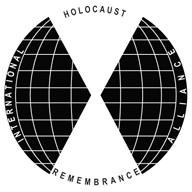“Our commitment must be to remember the victims who perished, respect the survivors still with us, and reaffirm humanity's common aspiration for mutual understanding and justice.”
-- Declaration of the Stockholm International Forum on the Holocaust
 INTERNATIONAL HOLOCAUST REMEMBRANCE ALLIANCE
INTERNATIONAL HOLOCAUST REMEMBRANCE ALLIANCE
“Our commitment must be to remember the victims who perished, respect the survivors still with us, and reaffirm humanity's common aspiration for mutual understanding and justice.”
-- Declaration of the Stockholm International Forum on the Holocaust
King Albert II of Belgium inaugurated the Kazerne Dossin Museum on 26 November 2012.
Officially called the Memorial, Museum and Documentation Centre on Holocaust and Human Rights, the museum opened to the general public on 1 December 2012.
The Memorial Dossin Barracks along with the new Museum Square and the Goswin de Stassartstraat opened in September 2012.
Further information on visiting Kazerne Dossin can be found here.
History of Kazerne Dossin
Between 1942 and 1944, 25,835 Jews and Roma and Sinti from Belgium and Northern France were sent to Kazerne Dossin. From Kazerne Dossin, they were deported for extermination. Just 1,221 people survived, less than five percent. To commemorate this, the Jewish Museum of Deportation and Resistance was inaugurated in 1995. The museum was of limited size, however, and unable to support large groups.
In 2001, plans were being drawn up for a completely new museum, with the full support of the Flemish Government. After an international architecture competition followed by consultation with local residents, construction of the project Kazerne Dossin: Museum and Documentation Centre on Holocaust and Human Rights began in September 2009.
A new museum will be built in the spot of the previous IKA building, opposite the Kazerne Dossin. The front extension of the barrack itself will be partly used as an archive and documentation centre as well as a place of contemplation. The two entities - museum and barrack - will be linked by a square with a monument, trees and footpaths.
AWG Architects, led by Bob van Reeth, designed the new museum to be constructed in light colors and materials. As a beacon in the environment that explicitly indicates the place of the event, but also as a positive message that exudes hope. The museum has the shape of a pentagon, with a large glass section and four floors.
Kazerne Dossin is first and foremost the appropriate place to continue to remember the persecution of the Jews. Also - or especially - when the final witnesses will no longer be here. There will be a permanent historical exhibition on the persecution of the Jews and Roma and Sinti and on human rights issues. Furthermore, human rights will also be dealt with through temporary, thematic exhibitions.
The infrastructure will be in full accordance with the needs of schools and international visitors. In total, the museum aims for 100,000 visitors annually by 2015. This will make Kazerne Dossin a new historical reference in Europe, equal to and cooperating with the world's best-known Holocaust museums.